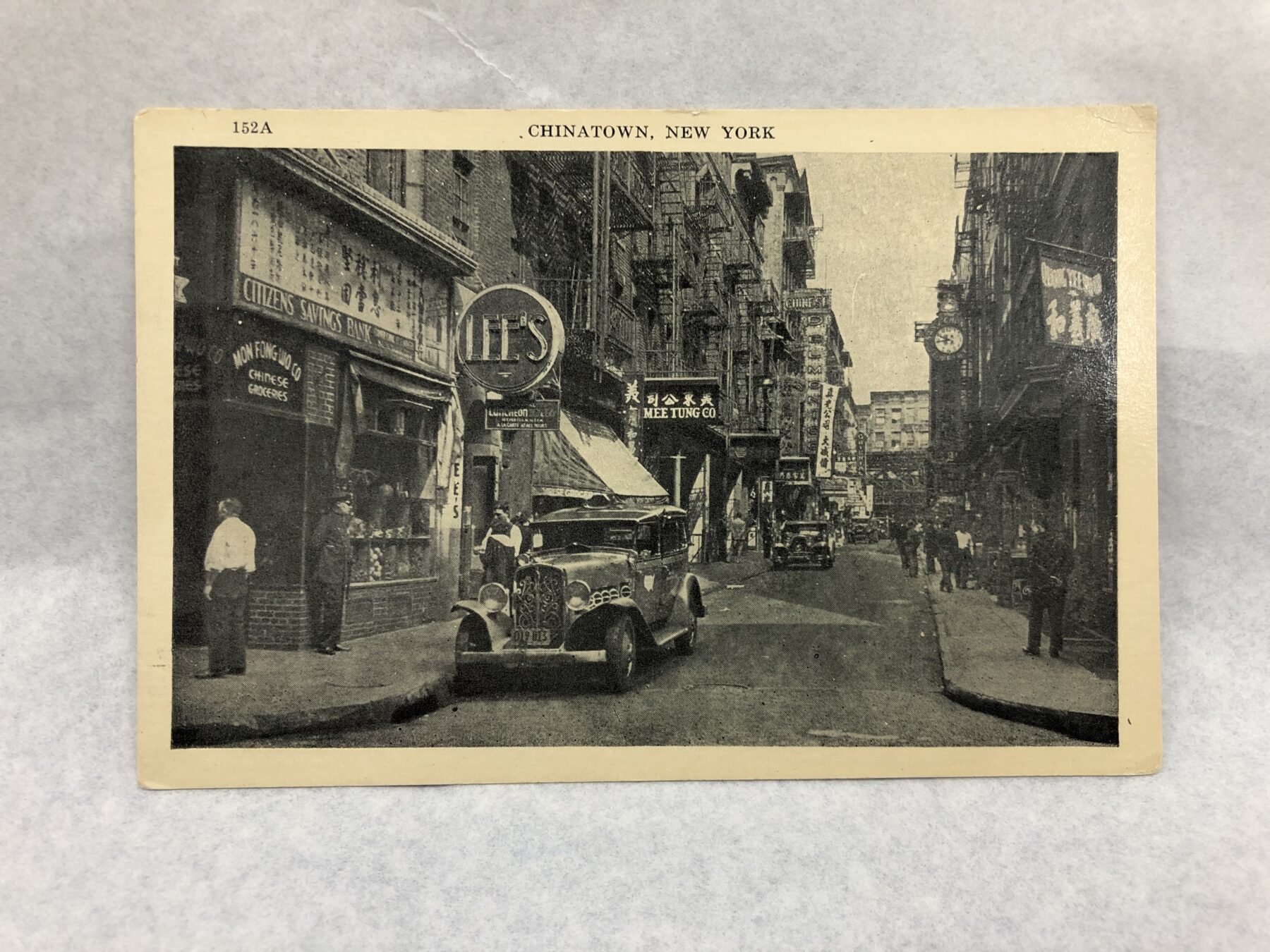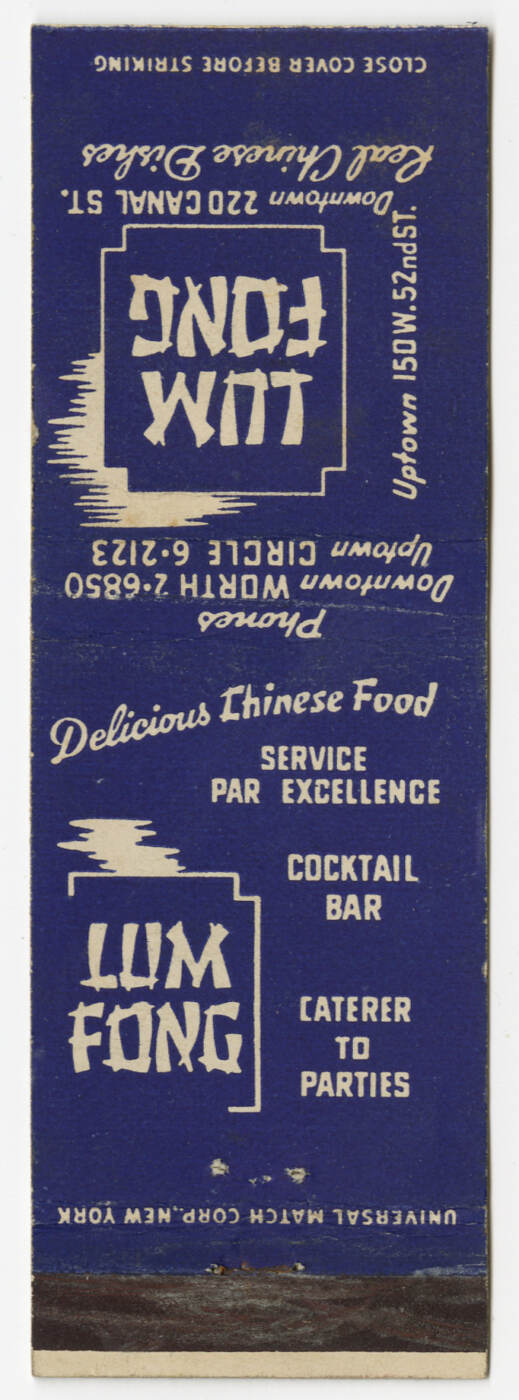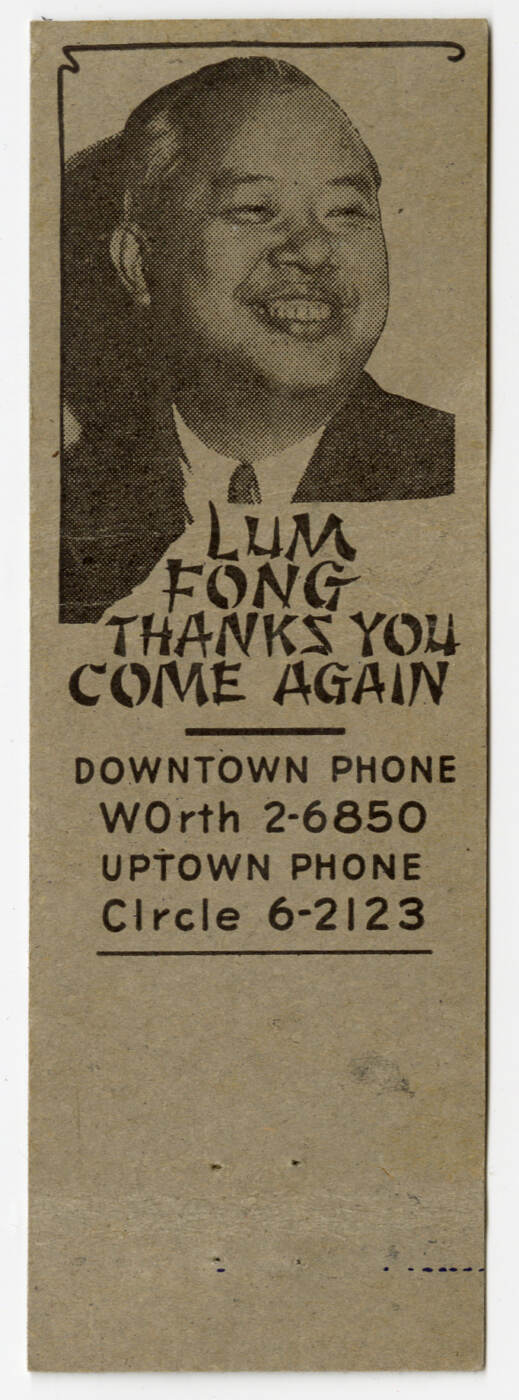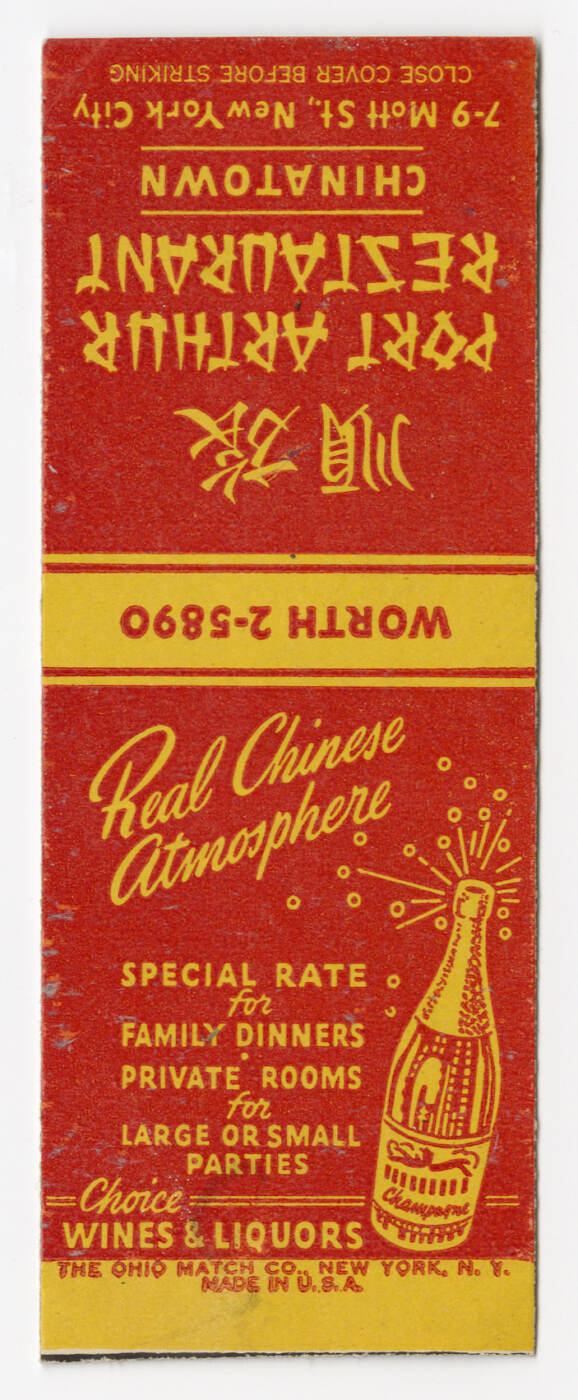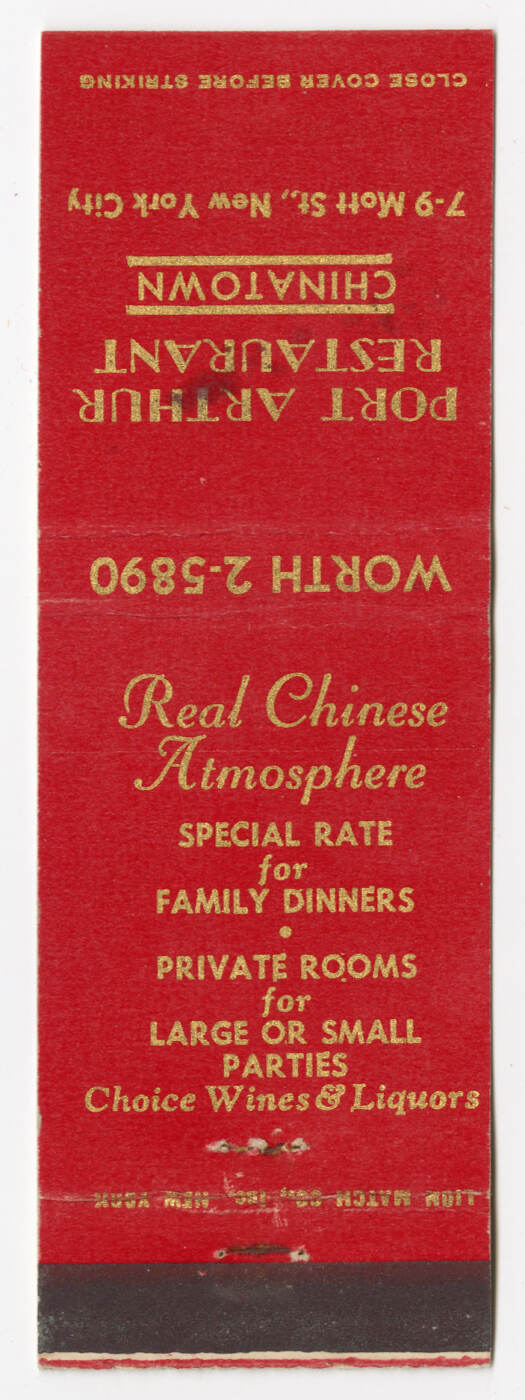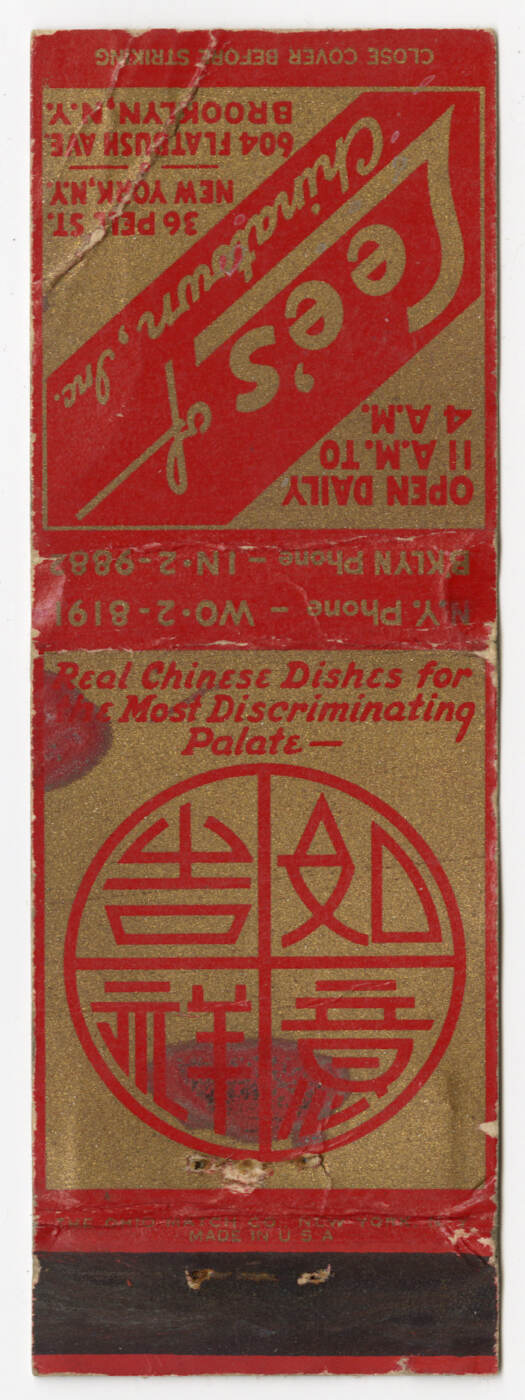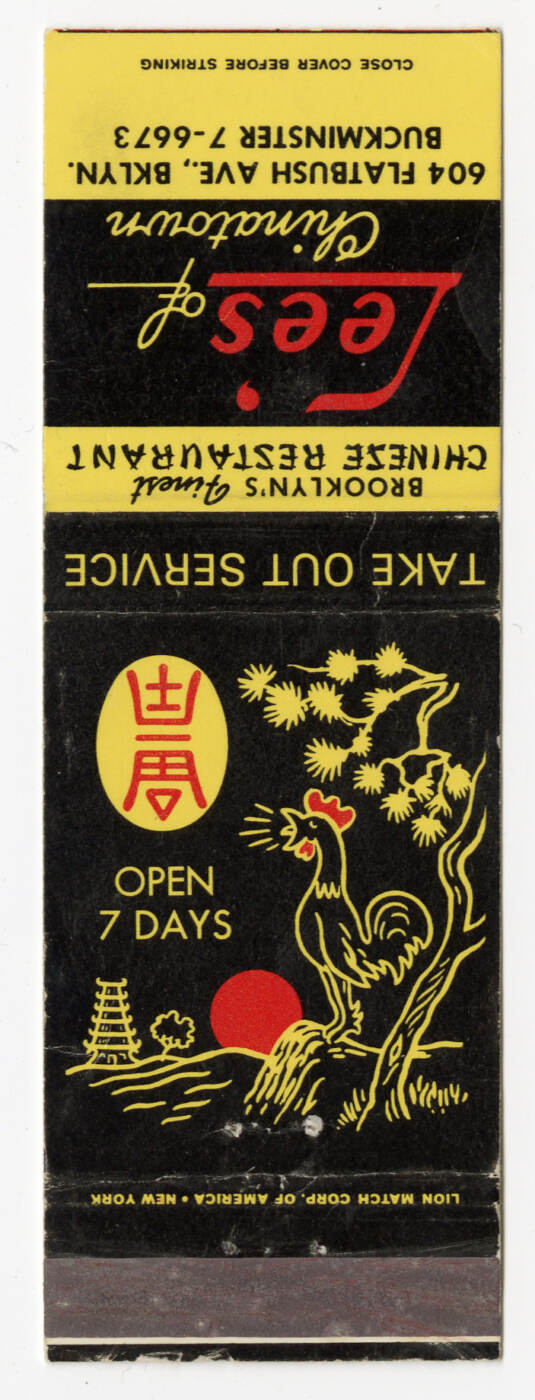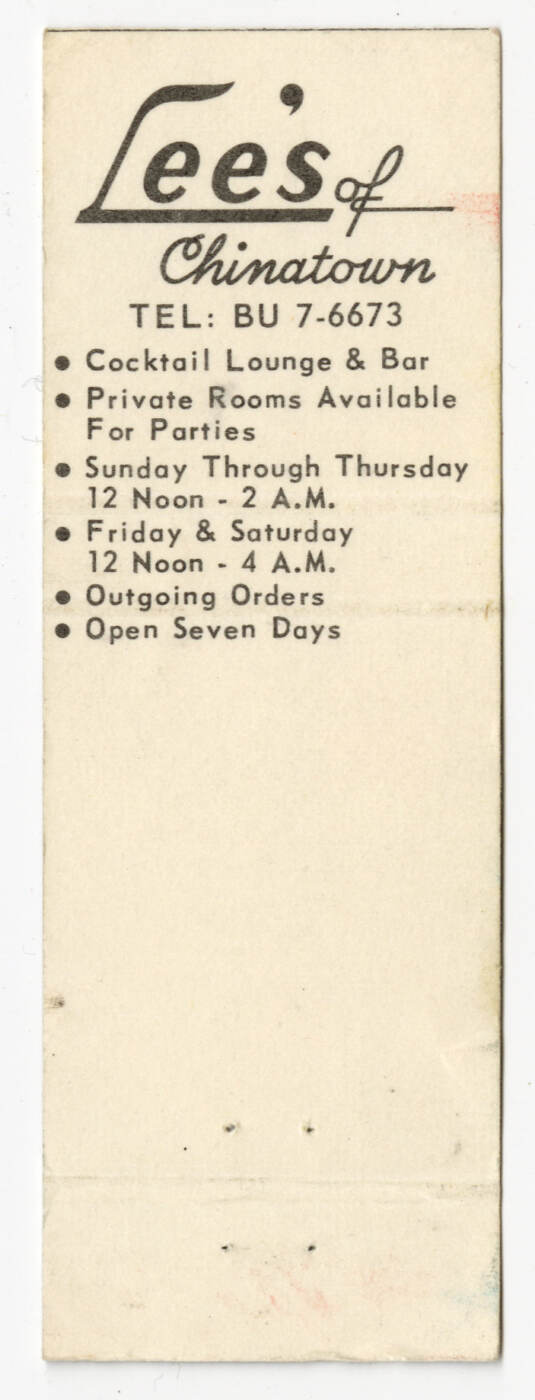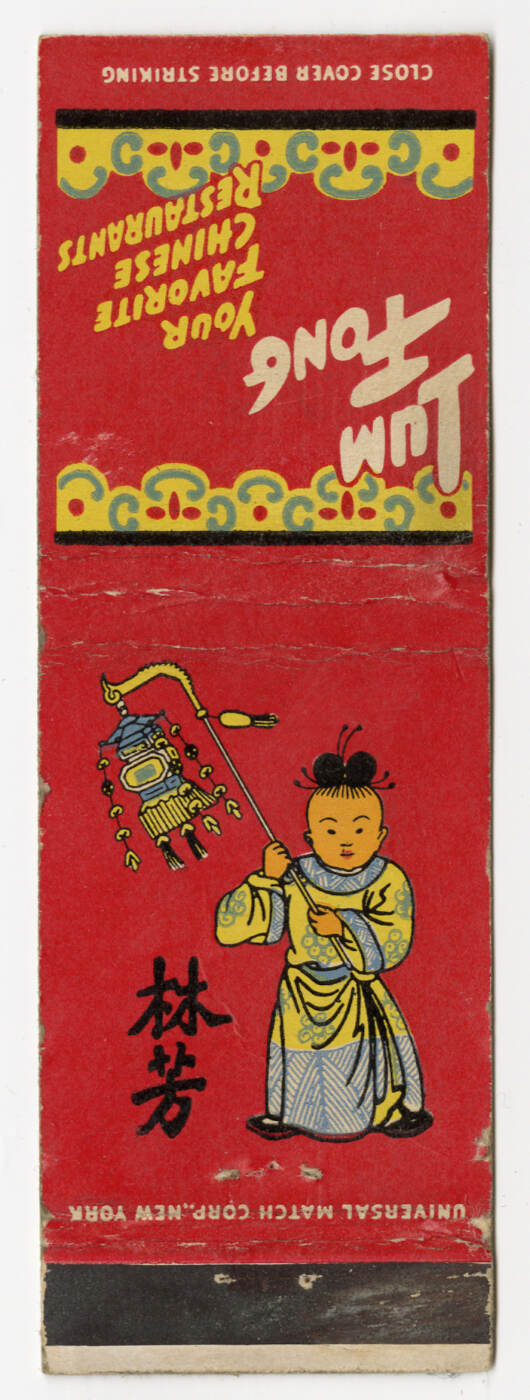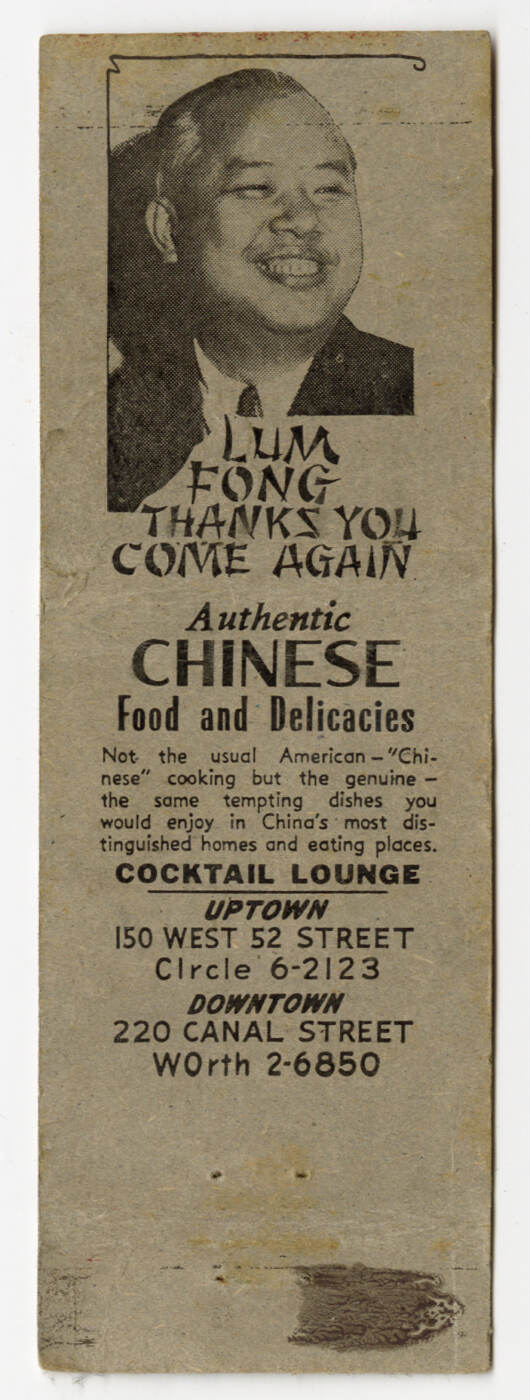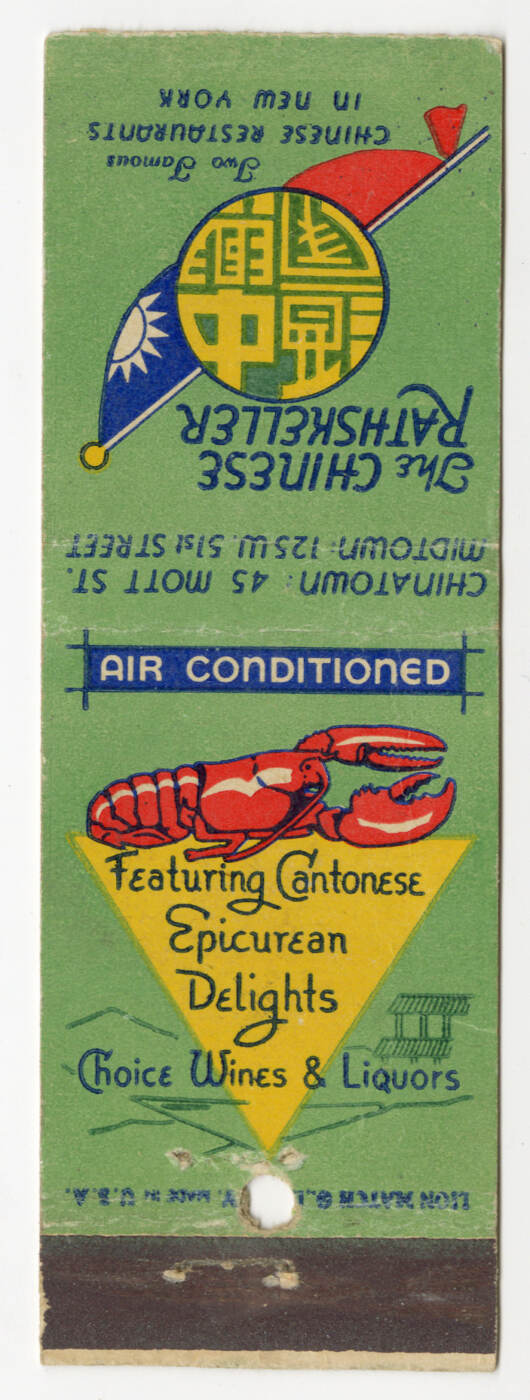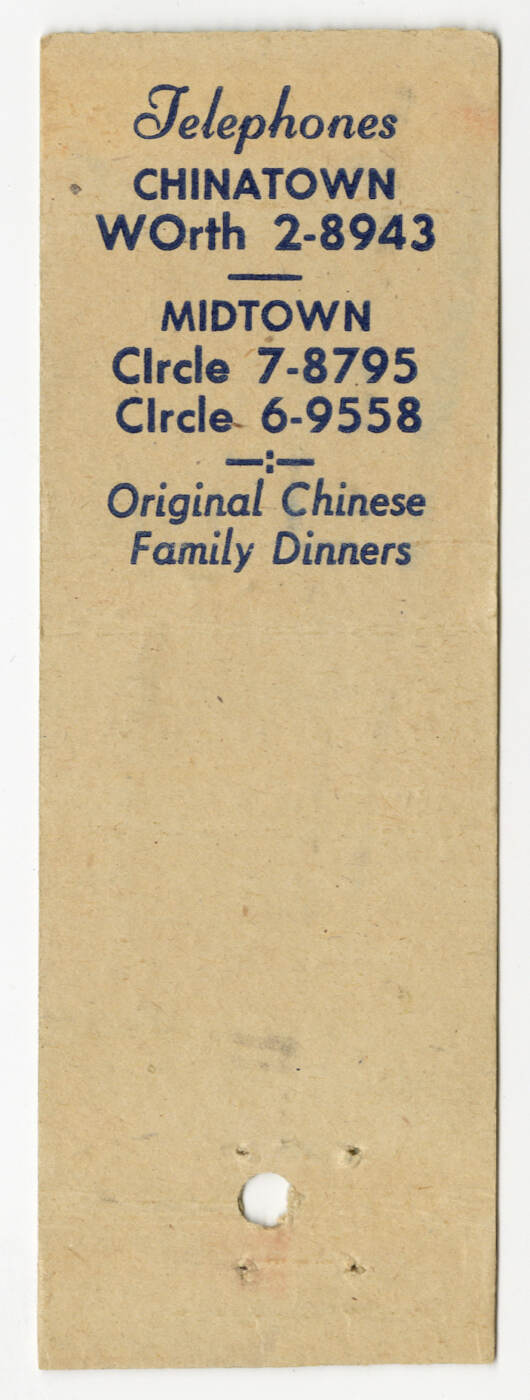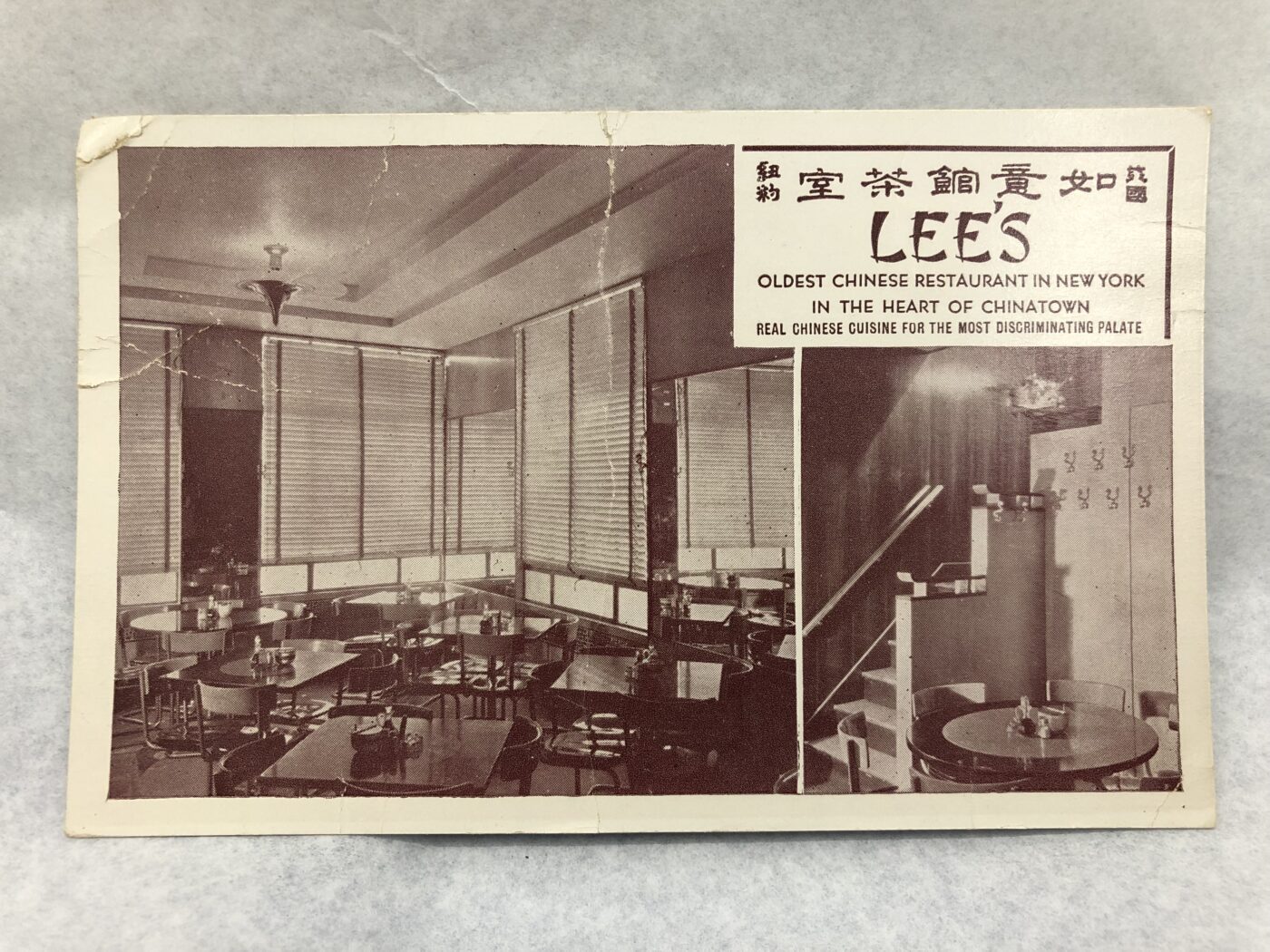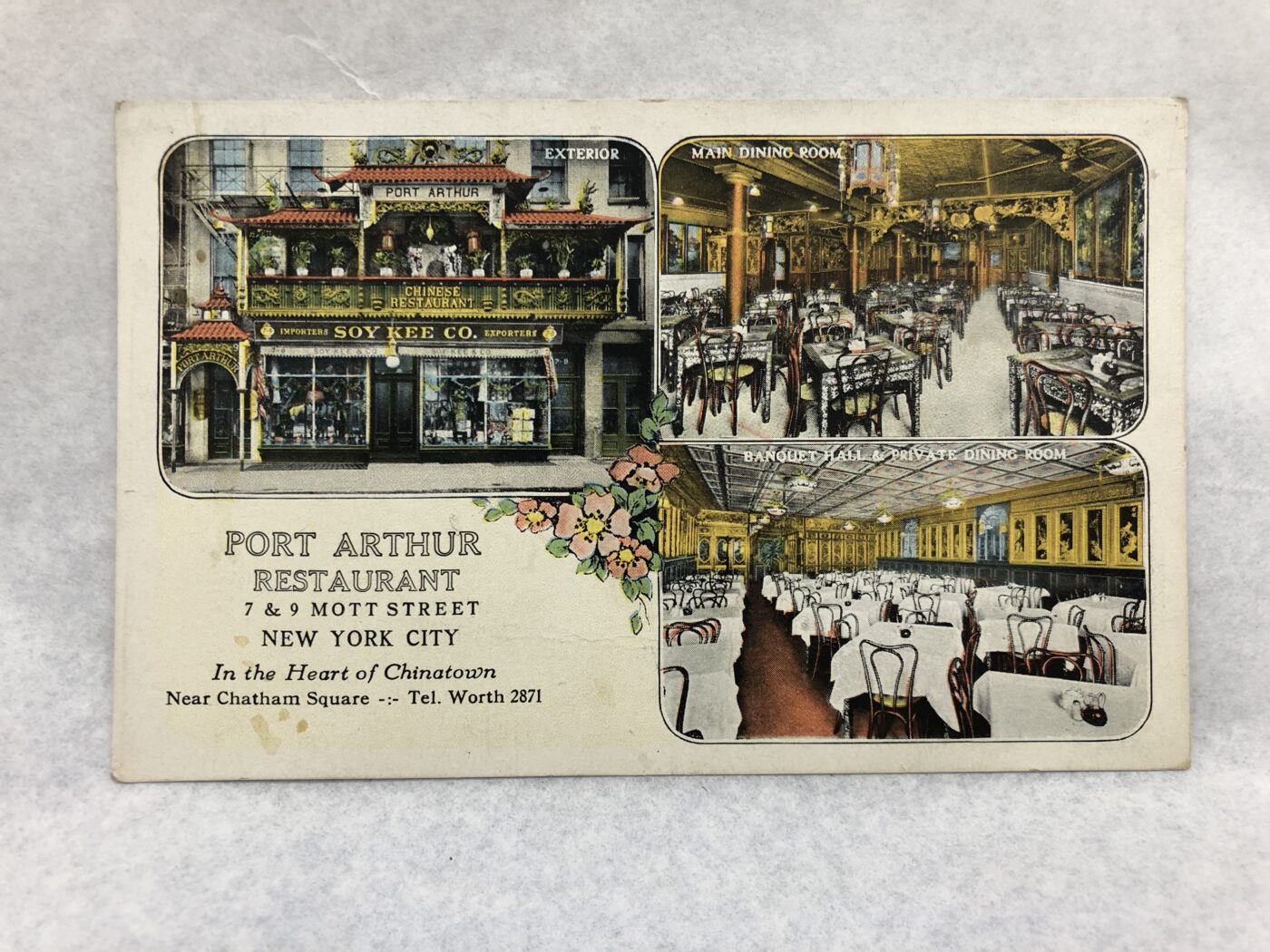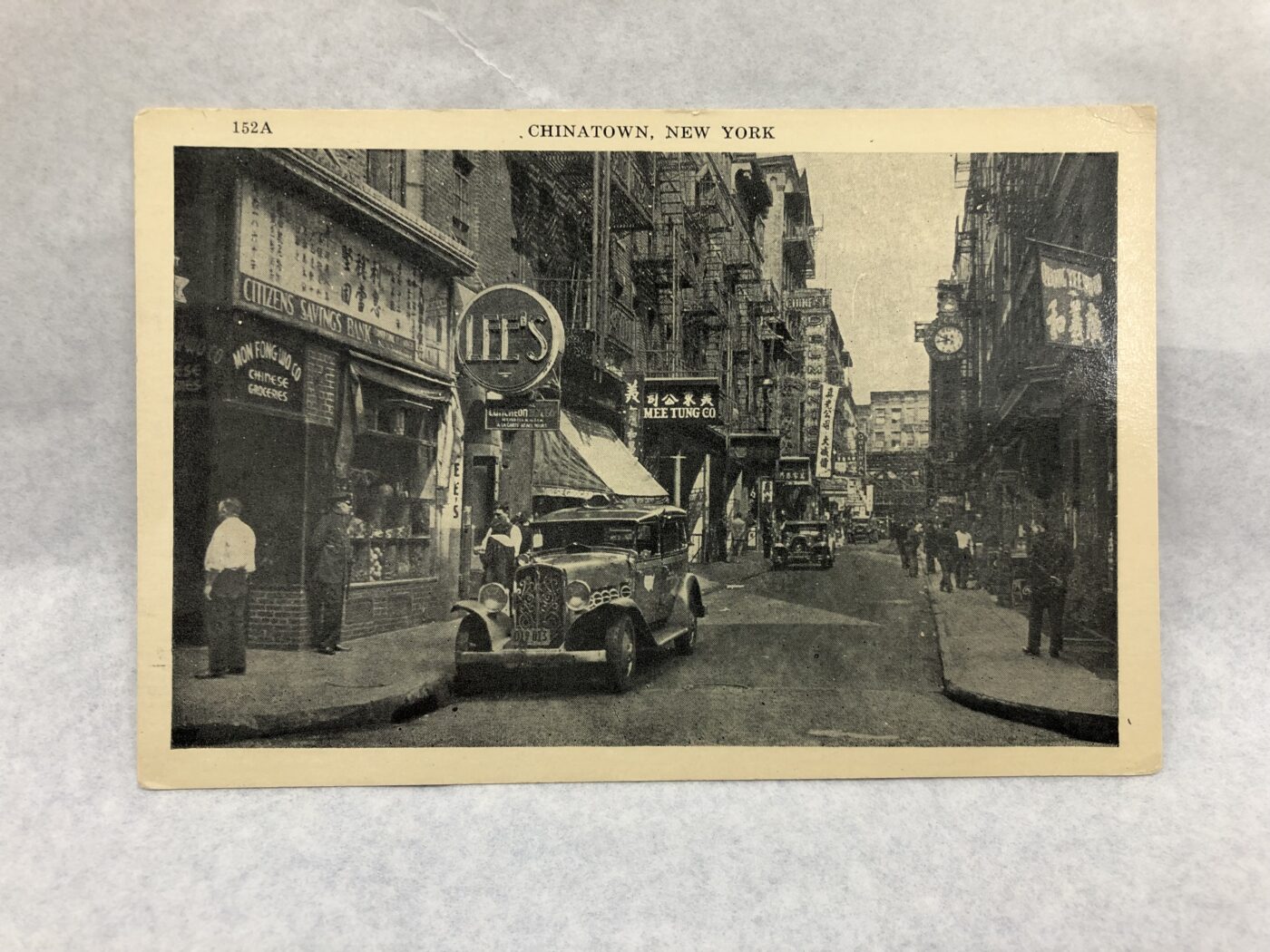This week we take a look at restaurant ephemera that showcase some of the oldest Chinese restaurants with decades-long histories here in NYC’s Chinatown. Gifted to us recently by Alex Jay, the restaurant ephemera we will be featuring includes a collection of matchbooks and postcards. These materials share a common purpose of advertising and promoting the place of business that produces these materials. While both have long passed their heyday in the early and mid-1900s, it seems that both postcards and matchbooks have recently started to reappear in restaurants and bars as favors for customers dining at the establishment. New York’s Chinatown, which has been associated with food and restaurants for at least a century, similarly adopted these contemporary advertising trends in the earlier parts of the 20th century, creating beautiful matchbooks and postcards to serve as an extra takeaway for diners.
The matchbooks included in this donation feature several restaurants from our very own Chinatown, with some “old school” names such as Lum Fong, Port Arthur, and Lee’s being featured in the lineup. These matchbooks have long since lost their matches, but it doesn’t discount the colorful art and product design that is featured in these small pieces of cardboard. The main staples in these designs are golds, reds, and yellows with Chinese-style English fonts and motifs.
The larger cardboard cousin, the postcard was at one point in time a common form of correspondence and therefore it was not uncommon to see restaurants create their own for customers to take away for mailing or collecting. Oftentimes, these cards depict the façade of the restaurant, the street scenes outside the establishment, or a “glamour shot” of the interior space paired with a description or motto in addition to the restaurant’s address and phone number.
As an advertising medium, they serve as a keepsake for customers to remember a great night out at the establishment and something that can have utility as a cigarette lighter or written correspondence. In either instance, it is a physical reminder that can hopefully entice you to return to its place of origin. Now long past their dates of production and their original intended audience, these restaurant ephemera can have an immense historical value similar to images and newspapers. Details that would have otherwise been lost after restaurant closing can be seen, such as interior décor, physical location, cultural values, and popular trends of the day can all be captured in these small yet rich repositories of information that at one point served to draw in business.
